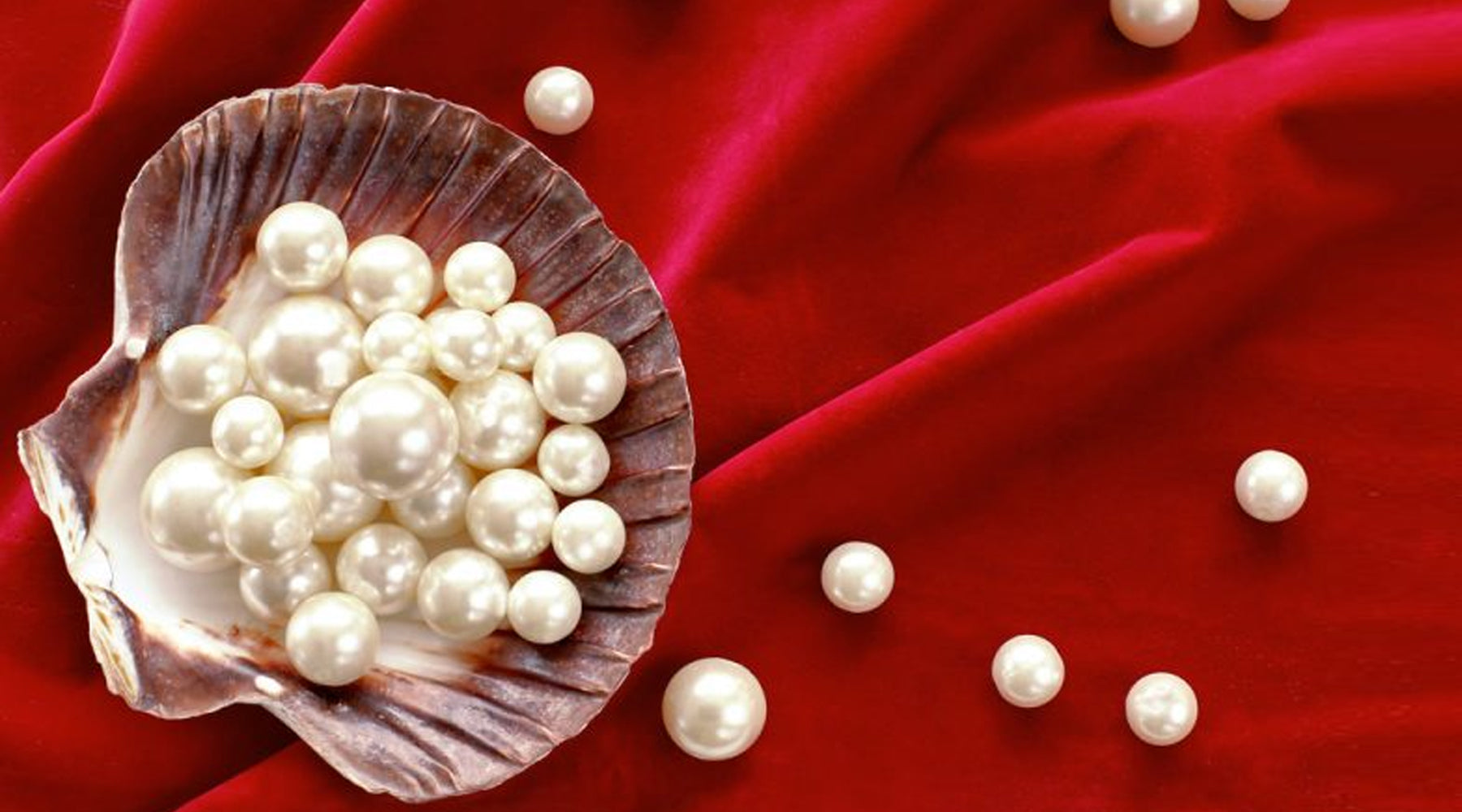Pearls are a mesmerizing type of gemstone loved and adored by many around the world. Most people mainly think of actors, politicians, Musicians, the rich, the ultra-rich, socialites, etc. But pearls are not just for the well to dos. Everyone can enjoy quality pearl jewelry.
This naturally occurring phenomenon known as pearls has been part of the fashion industry for quite some time now, and pearl jewelry is one of the most famous accessories these days.
Yet, many people know little about these precious gemstones. In this blog, we'll answer the top 10 questions people have about precious pearls, so if you've wanted to know more about these gemstones, you're definitely in the right place!
Let's dive in!
1. How are pearls formed?
Pearls are formed when an irritant gets trapped inside the mantle of an oyster shell. Feeling threatened by a foreign object that's found its way inside, the shell secretes a substance called nacre (nay-ker) to cover up the irritant.
Layers upon layers of nacre on the irritant are eventually hardened to make what we know as pearls. Ta-da!
2. What is Nacre?
It's an organic crystalline substance naturally produced by oyster shells. This substance also lines the insides of the shells.
Nacre is also referred to as Mother of Pearl. It's vital for pearls as it not only forms the pearl but also gives the pearl its unique hues and shine!
3. What's the difference between Natural vs. Cultured pearls?
We're jumping into one of the most popular questions regarding pearls right off the bat!
Both natural and cultured pearls are real pearls. The only difference between the two is that cultured pearls involve human intervention.
Cultured pearls are formed when pearl farmers implant an irritant or bead in pearl-bearing oysters to trigger the release of nacre, eventually forming the pearls. These pearls are then returned to their habitat and closely monitored. Later, they're harvested to retrieve the pearls inside the shells.
On the other hand, natural pearls follow the process described in point #1. Such pearls are scarce, and chances are, the majority of them have already been harvested, meaning the pearls you see in the market are most likely cultured pearls!
4. What are the odds of finding a pearl in an oyster?
Not every oyster contains a pearl inside! Around 1 in 10,000 does, and even if you find one, that does not mean you will find a usable pearl.
Pearl-producing oysters belong to the Pteriidae family. Only members of this mollusk family can produce pearls. The ones you eat come from the Ostreidae family.
For more information on this, check out our blog post: Does Every Oyster Have A Pearl?
5. What is the difference between Freshwater vs. Saltwater pearls?
The main difference is that Freshwater pearls are found in Freshwater while saltwater ones like Akoya live in saltwater.
In terms of the pearls, Freshwater pearls are more affordable and suitable for daily wear. They come in different hues like pink, peach, lavender, etc. On the contrary, saltwater pearls like Akoya tend to be more expensive due to their round shape and high luster.
In our blog post, we discussed the differences in detail: Akoya vs. Freshwater Pearls: Everything You Need To Know.
6. Do pearls come in only round shapes?
No, actually! Perfectly round pearls are hard to come by and are primarily found in Akoya pearls.
There are lots of other different pearl shapes. The most common ones are the button, baroque, drop, and circled baroque shapes.
7. What are the different types of pearls?
There are so many different types of pearls apart from the famous white ones you've seen all around you!
Pearls come in 5 main types: Akoya pearls, Freshwater pearls, Tahitian pearls, South Sea pearls, and Sea of Cortez pearls. Akoya is the classic white pearls we're all familiar with, famous for their 'mirror-like' luster and perfectly round shape.
We've covered pearl types and shapes in depth in one of our previous blog posts: Different Types of Pearls and Their Shapes.
8. Which types of pearls are the most valuable?
Not all pearls are the same and, therefore, differ in value and price point.
South Sea pearls are considered some of the most valuable pearls currently to exist in the world. That's because they're rare and very costly to cultivate. The golden South Sea pearls are revered for their stunning gold color.
A highly valuable and expensive pearl is the Tahitian pearl. They're large in size and have natural dark colors like black and deep blue, making them perfect for statement jewelry pieces.
9. How are pearls valued?
There needs to be a standardized way to grade the pearls, right? Unfortunately, there isn't.
However, most pearl vendors and farmers follow the Gemological Insitute of America's 7 value factors, also known as The GIA 7 Pearl Value Factors: Size, shape, color, luster, surface, nacre, and matching of the pearl.
To read more about the pearl value factors, check out our blog post: How to Grade the Quality of a Pearl.
10. How much are pearls usually worth?
It depends on the type of pearl. For example, a Freshwater pearl necklace can cost around $100 as they're the most affordable real pearls you'll find on the market!
As we go up the list, the price range increases, with Akoya pearls valued at approximately $10,000. If you stumble upon a perfect strand of South Sea pearls, it could cost up to $100,000 and more!
11. What is pearl luster?
Luster is a word you'll often find when reading about pearls. That's because it's one of a pearl's most significant value-deciding factors.
Luster refers to the shine of the pearls and the reflectivity of their surface. Just like diamonds, we're a sucker for everything that shines bright, and that's the same for pearls.
The most lustrous pearls, Akoya, are known for their glistening surfaces. It's said you can see your entire face reflected on the surface of a pearl that's high in luster! Isn't that cool?
12. How to tell if my pearls are real?
The key differences are their surfaces, colors, weight, and prices.
For example, pearls occur naturally and are bound to have imperfections, which is why no two pearls are identical! So, if you stumble upon perfectly smooth, extremely lightweight pearls with suspicious colors and overtones, they're likely fake!
Wondering how to spot fake pearls like a pro? Check out our blog Real vs. Fake Pearls: 5 Ways to Differentiate Between the Two.
13. How are pearls dyed?
The general process of dyeing pearls is to submerge them into the desired color. This is why you'll notice that dyed pearls are only a different color on their surfaces, and the color doesn't penetrate the pearl completely.
Pearls are also heated to darken the color of the nacre! This process involves silver nitrate, gamma rays, and organic dyes!
14. Which pearls should I buy?
Last but not least, if you've been planning to buy some pearl jewelry, which type of pearl should you go for? It depends entirely on your budget and how often you want to wear them.
If you're looking for something affordable and perfect for both day and evening, we suggest Freshwater pearls! They don't break the bank AND come in different colors as well!
If you're bolder and want to invest in something valuable, why not go for Tahitian or South Sea pearls?
On that note, check out our blog post, The Ultimate Guide to Buying Pearl Jewelry, before you decide.
Parting Thoughts
We hope we answered some of the most commonly asked questions about pearls. Remember to check out our previous blogs to learn more about these precious gemstones!
Check out our vast collection of pearls in different colors, sizes, and shapes! We are a family and US veteran-owned business from Lodi, California. We ship same day globally also!
Our specialty is innovative product reveals with hidden jewelry inside that will make you and your loved ones smile!



